The Hidden History of England's Villages
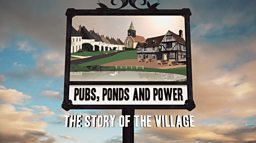
With historic churches, castles, market places and cottages, the English village is a magnet for tourists.
This cosy, picture postcard image is a snapshot of England which is recognised across the globe.
But the story of the village from Norman times to the present day is not one of sleepy rural idylls. It is a story of purpose, persistence and power.
‘Pubs, Ponds and Power – The Story of the Village’ looks at how England’s greatest villages have evolved over time.
Warkworth - Norman stronghold
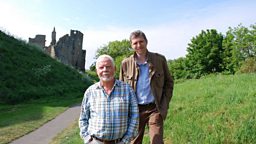
Warkworth has all the tell-tale features of a village with Norman origins - a castle, church, market place and a single main street.
At first sight, Warkworth in Northumberland is quaint and beautiful, but its landscape was born of terror, oppression and the foreign invasion.
Its Norman Castle towers over the village in a position affording total domination to the invaders.
The Normans built the castle as a stronghold on the edge of its kingdom.
Later, they followed their well-established practice of gathering the scattered local population into a single place where they could be more easily managed.
Before the invasion of 1066, the peasant population worked the land in servitude to their English masters, but the Normans took this feudal system to a new level.

Warkworth Castle - Norman stronghold
Discovering Warkworth Castle, a Norman stronghold in Northumberland.
Lavenham - Medieval village

Lavenham in Suffolk is a picture perfect village with dozens of merchant houses, often decorated in ostentatious style.
Its power came from making woollen cloth that was sold across England and Europe.
In the early 1500s, it became one of the wealthiest places in England where some of the country’s first entrepreneurs flourished.
Hidden under Lavenham is evidence of the wool industry - a late medieval underground passage which leads to a surprising find.
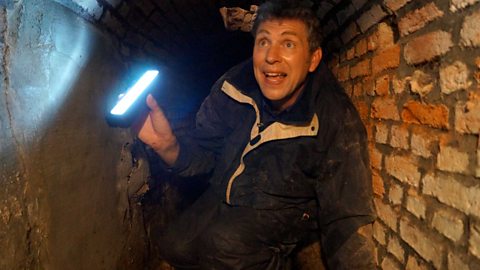
Lavenham's hidden tunnel
Discovering a hidden tunnel under historic Lavenham.
We cannot be certain why it was built but it is thought to be associated with the wool trade. It could have been used for a fresh water supply to wash and dye the wool or to flush away smelly waste.
Lavenham is a story of medieval boom and bust and by the mid 1500s its fortunes were in decline.
The famous Lavenham blue cloth fell from favour as clothiers failed to adapt to new techniques and designs.
The flourishing centre of Norwich became the new focus of the cloth industry.
Milton Abbas - 'Showpiece village'

The first thing you notice about the main street in Milton Abbas in Dorset is the regularity of the houses.
They were all built at the same time in the late 1700s which suggest order and a neatness typical of Georgian architecture.
The reality is that Milton Abbas was built as part of a much bigger plan designed to boost the image and power of one man.
Joseph Damer was a wealthy landowner who made Milton Abbas his home in in 1752.
After taking the title of Lord Milton, he set about turning his imposing country estate into a fashionable rural idyll to show off to wealthy visitors.
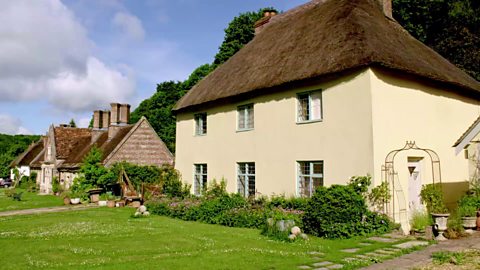
Milton Abbas - A village transformed
How one man's wealth and power were behind the creation of Milton Abbas village.
But there was one blot on the local landscape – the ancient bustling and smelly town of Middleton, right on his door step.
Lord Milton exerted the power his wealth afforded him by destroying the old town and its community.
In its place he created the new village of Milton Abbas, a sanitised and smaller settlement designed to house the farm workers and craftsmen working on his country estate.
The result was an idyllic model village with thatched cottages which still survives today.
Port Isaac - fishing village
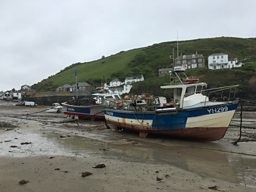
Fishing villages began to flourish in the Late Middle Ages, several hundred years after inland villages became part of the British landscape.
Port Isaac was a new type of coastal community, connecting Britain with the wider world.
It is the quintessential Cornish fishing village with its pretty cottages, narrow alleyways and rocky shoreline.
But dig deeper and there is a more complex story of Tudor entrepreneurs who began working and trading with lands far and wide.
For the Tudors, building a harbour wall to create a safe haven for fishing and trading boats was a huge feat of engineering.
There are still traces of the Tudor’s building work today, if you know where to look.

Port Isaac: Hidden Tudor harbour
Discover Port Isaac's hidden Tudor harbour.
Cromford - World's first industrial village
In the 18th Century, Richard Arkwright mechanised cotton spinning and started a textile revolution. Water draining from Derbyshire's hills and lead mines offered Arkwright exactly power to drive his new machines.
In the process, he developed a new type of village, engineered to service his textile industry.
Cromford in the Derbyshire Dales was transformed from a small settlement with a few scattered cottages into an ‘industrial village’.
Over the next 20 years Arkwright shaped the village which we see today. At its heart he built streets, cotton mills, worker housing, a market, shops and even a pub.
The business methods Arkwright devised in Cromford took the Industrial Revolution to a new level.
He was one the first industrialists to develop ‘industrial housing’ to attract workers to jobs in his new industry in Cromford.
A working class community was born and the person ‘in charge’ of the village was not one of the established gentry, but a wealthy industrialist, who called the shots.
Arkwright’s revolutionary ‘planning’ went on inspire other industrialists to build villages for their workforces.
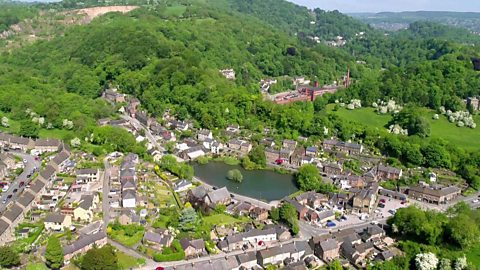
Cromford - The first 'industrial' village
How Cromford was transformed into an βindustrial villageβ in the 18th Century.
London's 'urban village' - Walthamstow
One of the last places you might expect to find a village is in London, but the reality is that the city evolved from a group of villages.
As the capital expanded rapidly during the Victorian period, many rural villages surrounding the metropolis were swallowed up, becoming part of the capital’s urban sprawl.
But this rapid urbanisation also produced resistance. Over the last 150 years – from Hampstead to Hornsey - Londoners have fought to preserve their historic villages and shape their future.
From 1967, conservation areas were created to protect the fabric of London’s historic villages.
Walthamstow was one of the capital’s very first designated conservation areas, and is now a prime example of the new breed of ‘urban villages’.
The historic centre of Walthamstow in East London dates back 900 years. It boasts many features you’d expect to find in a traditional village including a 12th Century church, a Tudor house, and Georgian alms houses.
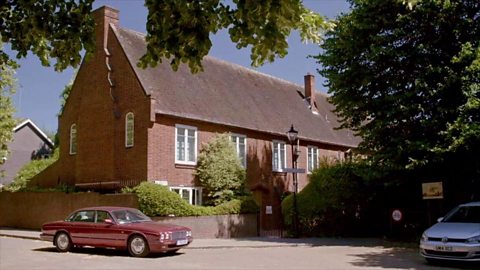
London's urban village: Walthamstow
Archaeologist Ben Robinson explores London - the ultimate 'city of villages'.
About the programme
Presenter and archaeologist Ben Robinson explores the history of villages in 'Pubs, Ponds and Power: The Story of the Village' on ΒιΆΉΤΌΕΔ Four from Tuesday 22 January 2019.

All the villages have wonderful, surprising histories and each of them is special in its own way.
But they also represent the heritage of hundreds of other villages throughout the country.
